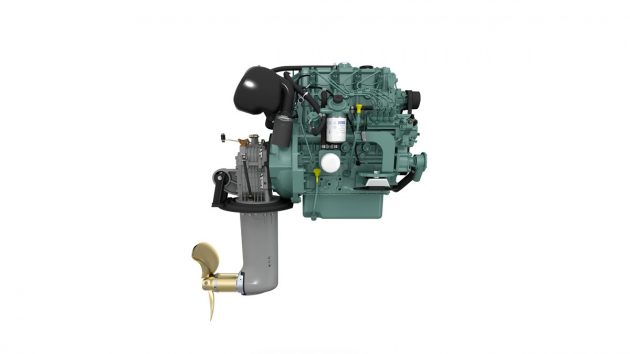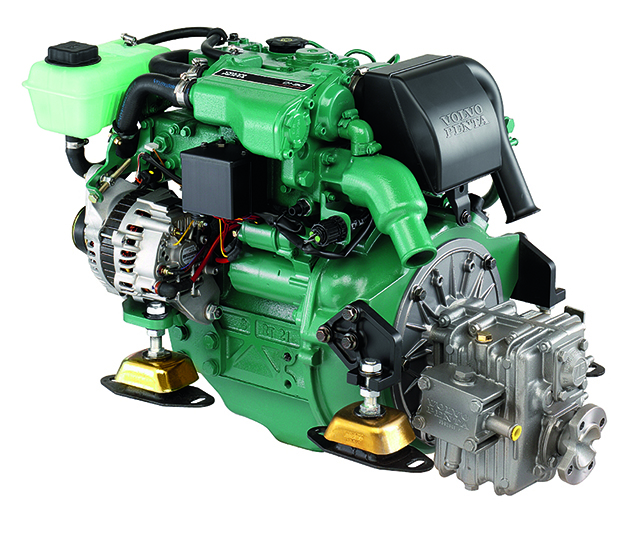Every sailor needs to understand how their diesel engine works. In the second of this series, we look at the diesel fuel system
The diesel fuel system comprises everything from the boat’s fuel tank to the engine’s fuel injectors.
There are two distinct parts of the fuel system: that installed by the boat builder and that attached to the engine.
The tank, primary filter and all the pipework to and from the engine are designed and installed by the boat builder.
On older boats, you may find modifications to this part of the system, so investigate it thoroughly to see if you need to bring it up to scratch.
One of the biggest problems with pipe work is leaks, often caused by vibration. But more about that later in the series.
Generally, apart from routine servicing and the usual wear and tear, there should be little trouble from anything supplied with the engine.
The main thing is to supply the engine with clean, water-free fuel. The diagram below lays out how a fuel system works and should be laid out.

Fuel tank: This is where the fuel is stored, it will have a filling pipe, normally from deck; it also has a vent – this is very important as the tank is not a pressure vessel.
As the tank is emptied or filled, air has to be allowed in and out. I have seen tanks on two boats where the vent has been blocked and the tank has bulged out due to over pressure, when filling.
Ideally, tanks also have a drain on the bottom to drain water and sediment after it has settled.
Fuel isolating valve: Fitted so the fuel can be turned off to change filters or a pipe, it can also isolate the fuel if there is a fire, so must be accessible.
Primary filter: The first of two filters does two jobs; the first is to separate out any water in the fuel (into the bottom of the see-through bowl) and to filter out any sediment.
Fuel lift pump: A small pump that supplies fuel to the fuel injection pumps, it is called a lift pump because sometimes the fuel tank is lower than the engine, so fuel needs to be ‘lifted up’ to the engine.
This pump can often be operated by hand when the engine is stopped, to bleed and prime the engine fuel system.
Secondary filter: A finer filter than the primary filter, it only removes muck.
Continues below…
Diagnose and fix marine diesel engine problems
Tim Bartlett explains how you can diagnose some common marine diesel engine problems, and fix most of them
How to: troubleshoot your diesel engine electrics
Promotional feature in association with GJW Direct. If you're engine won't start, knowing how to find the source of the…
How it works: The diesel engine: The 4-stroke cycle
Understanding how your diesel engine works is key to knowing how to look after it, and fix it when it…
Fuel injection pumps: These are the heart of the system. In these pumps a carefully metered amount of fuel is highly pressurised ready for the fuel injectors to about 300 bar (car tyre pressure is about 2 bar in comparison).
High pressure fuel pipes: Steel pipes to carry the high-pressure fuel to the fuel injectors.
Fuel injectors: Pressure operated valves that spray a small amount of fuel into the engine at the right time.
They are fully controlled by the pressure and timing of the high-pressure fuel sent to them by the fuel injection pumps.
The fuel is sprayed into the engine via a fine tip on the injector that atomises the fuel for better burning.
Fuel return pipe: There is always a small amount of leak off from the injectors and sometimes the lift pump supplies more fuel than is needed. In both cases fuel is returned to the tank.
The new edition Diesels Afloat (Fernhurst, £18.99) is available at www. fernhurstbooks.com. It follows the syllabus of the RYA Diesel Engine and MCA Approved Engine Course 1.
Buy Diesels Afloat from Amazon (UK)
Buy Diesels Afloat from Amazon (US)
Buy Diesels Afloat from Foyles (UK)
Buy Diesels Afloat from Waterstones (UK)
Buy Diesels Afloat from Google Play
Note: We may earn a commission when you buy through links on our site, at no extra cost to you. This doesn’t affect our editorial independence.
Enjoyed reading How it works: Diesel fuel system – from tank to cylinder?
A subscription to Yachting Monthly magazine costs around 40% less than the cover price.
Print and digital editions are available through Magazines Direct – where you can also find the latest deals.
YM is packed with information to help you get the most from your time on the water.
-
-
-
- Take your seamanship to the next level with tips, advice and skills from our experts
- Impartial in-depth reviews of the latest yachts and equipment
- Cruising guides to help you reach those dream destinations
-
-
Follow us on Facebook, Twitter and Instagram.







